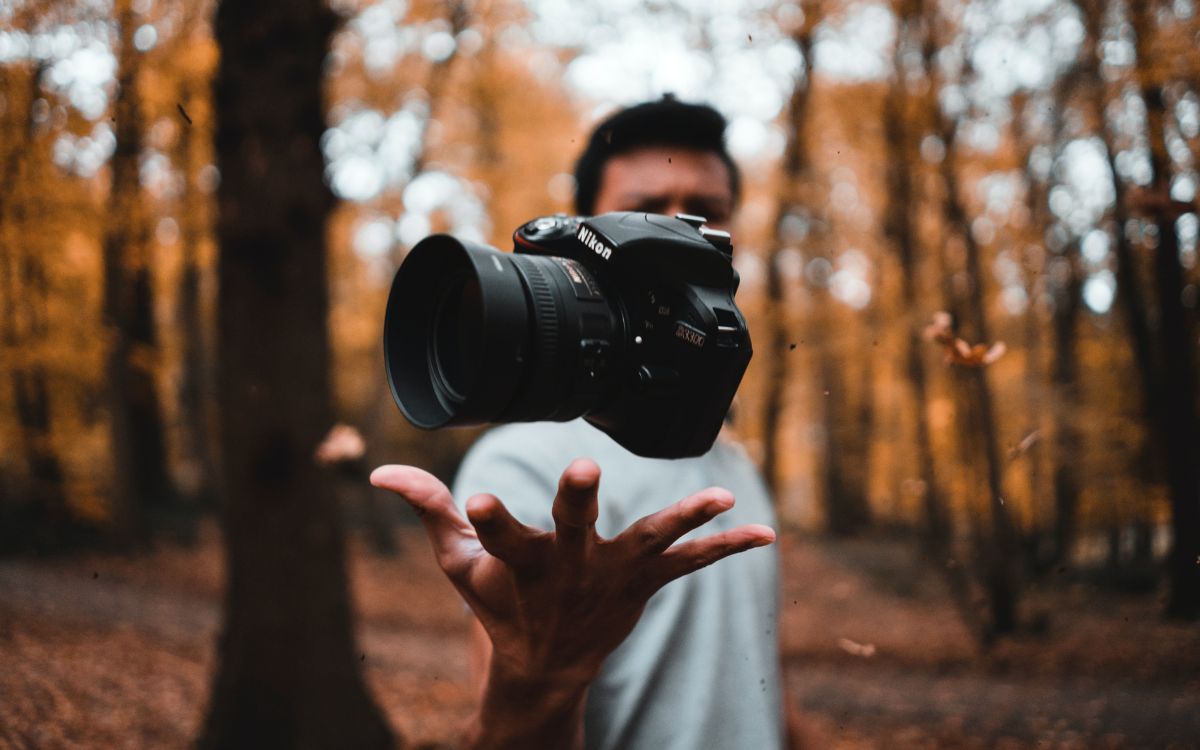Time lapse videos are a beautiful way to tell a story. A fast playback of photo sequences, they allow us to manipulate time to explore natural processes and movement not usually observed by the human eye – or to film a piece of action that happens so quickly, it needs to be stretched out to properly understand what’s happening.
In this walk-through, we’ll show you how to capture hypnotic time lapse footage (filmed on pro cameras or iPhones) and share some top tips to get the best results.
What is a time lapse?
A time lapse video is actually a series of images of a scene captured over a length of time. The photos are then pieced together to create a fully immersive video experience. Time seems to speed up, as you compress hours or days of footage into a video that can last just a few seconds.

How do Creators choose the right subject?
The best time lapse videos focus on slowly-changing scenery, natural processes and long periods of activity. You could capture a burning sunset to share on your YouTube travel page, or a time lapse of the night sky for your music video.
Some Creators use time lapse videos to showcase their art and capture themselves painting a picture or crafting a sculpture over a longer period of time. The possibilities are limitless.
Can I create a time lapse video on my phone?
For sure, the latest iOs software comes equipped with a time lapse function. If you’re an Android user, there’s a range of nifty apps you can use to capture time lapse footage. The pro’s choice is Lapse It, which allows you to access other apps while you’re recording in background mode, meaning you can still check in on Insta while filming.
If you want to take your time lapse footage to the next level, consider purchasing a dedicated camera. Lickd’s Brand Advocate and time lapse pro Matt Vandeputte explains what camera to pick in this video.
How do I make a time lapse video on my iPhone?
On your iPhone, open the Camera app and select time lapse shooting mode. Tap the screen to set the focus point. Then, swipe up or down to change the exposure (image brightness). Tap and hold to lock the exposure and focus. AE/AF Lock will appear on the screen, which means the focus and exposure are fixed and won’t change, even if the light or subject changes.

7 top tips to create an epic time lapse video
Essentially, the idea is to take many photographs as possible during intervals. You then piece together the images in post-production to make a hypnotic video. Now we’ve got the basics sorted, here’s some expert tips to get you started.
Use a tripod OR stabilization setting
Image stabilization is great: it reduces motion and shakiness, giving you sharper images… but only when your camera is handheld! When your camera is on a tripod, your phone will be ‘hunting’ for motion that it’s trying to stabilize. The result is a messy, shaky timelapse sequence. Use a tripod OR a stabilization setting – never both.

Get a sturdy tripod
If you’re using a tripod, make sure it’s a sturdy one. You can weigh it down or spread out the legs to reduce vibrations and distortion from the wind. If you do end up with shaky footage, apply the Warp Stabilizer in Adobe After Effects or Adobe Premiere pro to reduce the motion.
Nail your interval settings
Matt suggests using the following values. These are averages, and change depending on the scenery, but they’re a good starting point:
People and traffic: 1-2 seconds
Clouds and landscapes: 3-6 seconds
Sunset or sunrise: 6-10 seconds
When filming people or traffic, it’s essential to get some motion blur by dragging your shutter. You will get the smoothest results if your shutter speed equals half the interval time.

Shoot in Manual Mode and RAW
For the best results, make sure your camera is in Manual and none of your settings are on Auto. Shoot RAW photos instead of JPEG, as RAW gives you so much more to work with in post-production. You can change the white balance, recover dark shadows and capture a lot more detail and color to make your time lapse more immersive.
A JPEG is a compressed photo, whereas RAW is the raw data that comes from the image sensor. If you’re using an iPhone or Android, you can install a third-party app to help you capture RAW files.
Get an ND filter
An ND filter – or Neutral Density filter – is a dark piece of glass that goes in front of your camera lens. It helps to drag out your shutter speed to create longer exposures, meaning a smooth motion blur. Even cheap ND filters can elevate the quality of your time lapse. In this video, Matt explains why you need one – and which one to buy.
It’s all about the edit
Edit your footage in Lightroom, Premiere Pro and Adobe After Effects. These are packed with features designed to optimize your time lapse video, as Matt explains in this video. If you’ve not got to grips with these programs, you can also make pretty decent time lapse videos using your computer’s built-in software like iMovie.

Choose the right music
Don’t underestimate the power of music. When making a hypnotic time lapse video, music is essential for evoking human emotions. And when you’ve spent hours (or even days) recording, editing and perfecting your time lapse video, generic stock music isn’t going to cut it. Lickd offers real songs from real labels that will give your video the edge.
Lickd offers chart-topping music for YouTube videos from major record labels that your viewers will actually have heard before — not boring background music that’ll put your audience to sleep. If you’re a new YouTuber, it’s all good. Lickd creates custom quotes that adjust based on the size of your audience. If you’re not huge yet, you won’t have to pay huge prices. Lickd lets YouTubers search for high-quality tracks by genre, length, mood, and more. Plus, if you sign up today, you get 25% off your first track!
Unsure how to cut your audio to perfection? Check out Lickd’s Audio Editing channel to learn how to edit audio to video like a pro.

